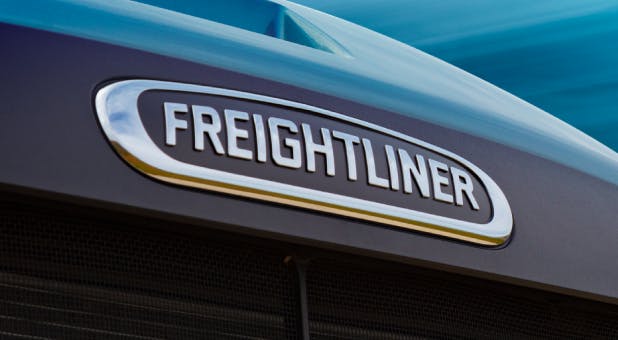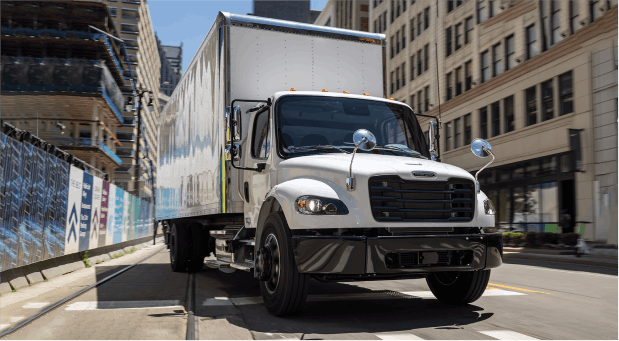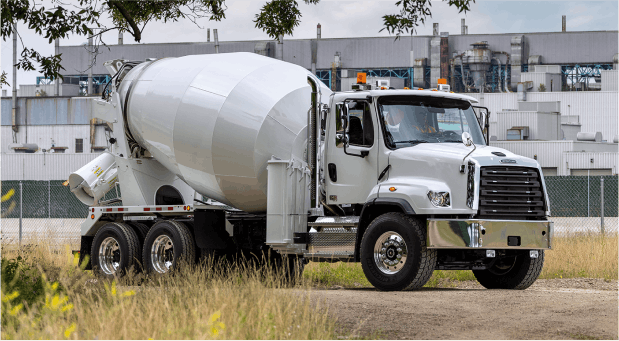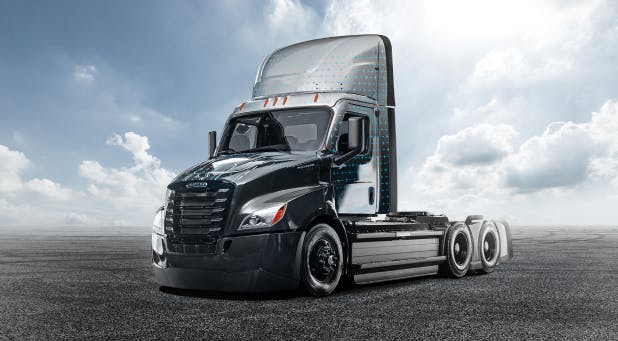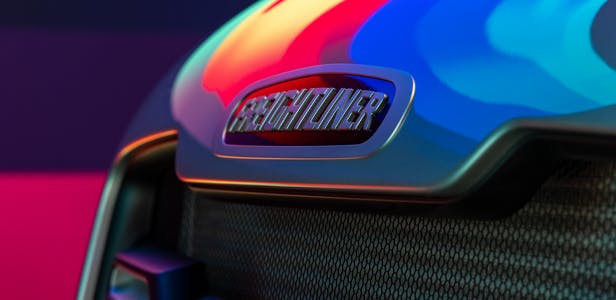MBF Industries Banks on Freightliner for Reliable Trucks
Freightliner Trucks Severe Duty Newsletter
"We first started using Freightliner trucks for their reliability, service, ease of customization, and product variations to fit our needs — and the same thing is true today. They are a competitively priced, high-quality product, and [Freightliner] has a broad enough product line that allows us to meet all of our different types of applications." — John Baker, president and owner of MBF Industries
How does a bank consultant end up founding and building an innovative truck equipment manufacturing company that serves the banking, medical, military and homeland security industries? Well, in his words, it all kind of happened “by accident.”
John Baker, president and owner of MBF Industries, was working as a bank consultant when he got the idea for a mobile ATM unit. “I had no idea how to do it or what was involved in doing it, but I stopped at an RV dealer, picked up a brochure, and sketched out what I thought it should be,” said Baker. After having an architect transfer his drawings to blueprint paper, he made a presentation to Nations Bank in Jacksonville, Fla., now owned by Bank of America, and the rest is history.
MBF Industries was founded in 1992. The company created the first mobile ATM truck and conducted the first financial transaction over the cellular network, essentially laying the groundwork for the mobile banking apps on our smartphones today.
About 10 years later, shortly after 9/11, Baker made his foray into a new industry. “I was sitting in the kitchen, drinking a cup of coffee, and I read an article in the newspaper that said the government was going to spend $47 million on homeland security,” said Baker. “The article mentioned mobile command centers, so I started researching what it was and thought our mobile banking technology would apply — and it did.”
After 9/11 and Hurricane Katrina, public safety agencies — police, fire department, EMS — were not able to communicate with each other because each agency’s communication system was different. These national disasters uncovered a need for a compatible communication system, and MBF Industries built one of the first mobile command centers to have this new equipment. The unit from Anne Arundel County, Maryland, served as an emergency 911 call center in New Orleans after Katrina had destroyed much of the existing infrastructure in the city. This technology gave the agency mobility and the ability to communicate with multiple agencies in different jurisdictions.
Vehicles with such an important job require a reliable cab and chassis, which is why MBF Industries started using Freightliner trucks for its mobile command centers and bigger bank trucks.
“We first started using Freightliner trucks for their reliability, service, ease of customization, and product variations to fit our needs — and the same thing is true today,” said Baker. “They are a competitively priced, high-quality product, and [Freightliner] has a broad enough product line that allows us to meet all of our different types of applications.”
One of MBF Industries’ recent truck deliveries was a mobile command center for Manatee County in Florida. This mobile command center was built on a Freightliner® M2 112 chassis with a steel-reinforced aluminum day cab. It features an MBF Re-Mountable All Aluminum Body©, so in the event the chassis is damaged, the body can be detached and bolted to a new chassis. It has custom interior and exterior cabinetry, workstations, a conference room, and bench seating. It also features a full diamond plate roof, 42-foot pneumatic mast, satellite dish, command light and 46-inch exterior monitor.
The M2 112 has the Freightliner SmartPlex® Electrical System, which reduces the number of wires for streamlined chassis-to-body electrical integration. It also allows for custom programming without the need for special software or tools.
“We get numerous compliments on the quality of the product, and what we like about Freightliner is we can count on them,” said Baker. “We have enough things to deal with on our side of the plate without having to worry about [the truck] — and we don’t have to.”


